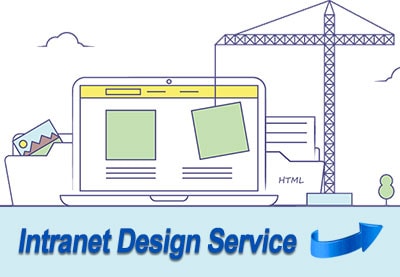Getting your new intranet off the ground can be a daunting task. How do you get started? There’s so much to think about. Perhaps you’ve tried googling ‘how to start your intranet’ and were put off by the complexity of the results. Especially if technology isn’t really your thing, then setting up an intranet can be downright scary. The good news is that you don’t need to be a techno geek to set up an intranet project. The truth is it’s a much simpler process than you perhaps realize. Here we make it easier to get started as we put you in the zone by identifying the different areas to consider before you start.
Intranet Project Tasks
1. Intranet Needs Analysis
The first step is to work out your aims and objectives for the intranet. For some businesses, the impetus for an intranet is the need to improve internal communications. For others, it’s a desire to streamline business processes with faster and more accurate online ones. For others still the motivation is more to do with building connections with staff to enhance employee engagement.
 Every business is different and being clear about the pain points you want the intranet project to address will help guide the planning and implementation. It will also provide a yardstick for you to measure success post-implementation.
Every business is different and being clear about the pain points you want the intranet project to address will help guide the planning and implementation. It will also provide a yardstick for you to measure success post-implementation.
To this end, some companies set up an intranet steering group with representation from across the organization to oversee the process. That way every team can feel as though they have an input into the intranet’s design and set up. It will also help with post-launch implementation if staff have already bought into the process.
At a minimum, you will need to consult with staff about what’s required. Find out from them what information and data they would like to see in the intranet. Consult them on the tools and modules available with an intranet platform. How could they be utilized to support operations? You can canvass employees’ views either through a questionnaire or a staff focus group.
Another way to approach it is to undertake a task analysis. Key business tasks are identified and are then broken down into their constituent parts. The aim is to gain a better understanding of what’s involved at each step and the information that is required for completion. At the end of the process you will have a much better idea of how the intranet needs to be able to support staff on a day-to-day basis.
2. Intranet Site Map
A site map is an essential step in any intranet implementation project. It helps you to organize all the information and enables you to see any duplication or overlaps.

- Home
- News
- Forum
- Staff Directory
- Document Exchange
- Calendar
This may be sufficient for your business or you may want to include additional pages for, say, individual teams or different office locations if you have them.
You now have a blueprint for your site map. You can begin to add pages and modules to it depending on the outcome of the intranet needs analysis. Brainstorm with a staff focus group or the intranet steering group any additional tools and modules needed to achieve your overall aims and objectives. And slowly being to build a comprehensive site plan to guide the implementation.
3. Intranet Roles And Responsibilities
A key consideration when establishing an intranet is to distribute site, page and content management responsibilities amongst key staff and users. These responsibilities are typically enabled through a hierarchy of permissions or rights allowing assigned users to access broader areas of the intranet, enabling them to use tools to administer, edit and control content. Such a hierarchy is often constructed based on job titles or responsibilities (roles) or role groups (teams) within the business.

An example of such a hierarchy is evident in large public forums on the internet where anyone can view a post, but only registered users can create new topics. These guests and users are administered by various moderators who are themselves overseen by the owner of the website. And so, creating a hierarchy of roles will enable everyone to understand their position and responsibilities.
4. Intranet Governance
Governance and accountability are important factors in determining the success of an intranet project. Since the intranet is a communication tool, it is important to identify the individuals who will communicate through the pages on the intranet. For example, important actions such as document version control, file modifications, editing of messages and publishing should identify the person who undertakes these specific tasks. Such accountability and governance procedures will ensure that the site administrator is able to identify and make staff accountable for those tasks. An intranet governance policy makes it clear from the get-go who is responsible for what.
5. Intranet Page Layout & Navigation
While developing intranets, site administrators can forget that the end users may not be tech savvy and create site and page layouts which are difficult to browse or are overly complicated. Therefore, it is important that page layout and navigation are kept simple so that even a novice can easily locate the required information. Site administrators can also get a feel for different layouts by reviewing the websites of prominent technology companies. Most of these companies will have simple layouts.
6. Intranet Pilot

Choose an office location, a team or a group of staff to pilot the intranet. And give them sufficient time to try things out – you’re unlikely to get any meaningful feedback if the pilot phase is only for a couple of days. We suggest that two weeks is about the right length of time. It will allow staff to really get their hands dirty with the software, but it won’t push the implementation date out too far.
Make sure that you set aside the time to adequately review the feedback from the pilot group. Iron out any problems and act on useful insights and ideas.
7. Intranet Communication Tools
News blogs and forums are not exclusive to the web. These types of social communication tools are also an inherent part of a good intranet. Logically, one of the main purposes of the intranet is to close the communication gap, and news blogs and forums provide the most cost-effective solution to communication. Remote access will allow staff to review and post messages from their homes and client sites, therefore allowing them to be updated and engaged at any time. This is especially important if your business employs lots of freelancers or telecommuters. It will build connections and a sense of team spirit with colleagues no matter their physical location
8. Intranet Launch Plan

Therefore, it is critical for all site administrators to establish a launch plan. This will create a sense of excitement and anticipation amongst staff. Why not get staff looking forward to the launch with a competition to name the new site? A launch plan can include identifying intranet ambassadors or evangelists and promoting go-live parties and giveaways.
9. Intranet Training Program
And when it comes to wholescale adoption and participation, it’s surprising how many companies omit to set up a staff training program. You cannot take it for granted that staff will simply take to the intranet from day one. After all, they are not as familiar with its capabilities and functionality as you are. They will need to be trained in how it works and supported to get the best out of it.

10. Simple Intranets
Simplicity is the key to the success of your intranet site. Industry specialists agree that the best intranet sites are those that keep it simple. Easy to navigate, intuitive to follow and uncluttered, simple designs make the most effective intranets.
Intranet Project Setup Summary
In summary then, before initiating an intranet plan, a site administrator should consider the following steps:
- Conduct a survey of staff and management to gain a better perspective on the top priorities for what the site should deliver.
- Based on the survey, develop a plan that should include the objective of the intranet, its adoption plan, and its potential usage.
- Review other intranets and websites to get ideas on the best elements of intranet design and designate content ownership. These are essential steps in intranet design.
- Create a site map or plan including pages and modules.
- Conduct a post-launch evaluation to get feedback and continue to update the intranet as needed.
Intranet Design Service
And if time or a lack of internal expertise is a real issue for you, then why not take advantage of MyHub’s intranet design service. We will work with you to set up a fully functioning intranet site that meets your needs and satisfies your organizational pain points. Our intranet designers follow a clear engagement process which is proven to deliver a great intranet site, on time and within budget.

The next step is the detailed design. We will ensure your company logo, corporate colors and branding are incorporated throughout the site. Next, we add your content to pages including text, images, graphics, videos and online forms. Users are then added to the site and are assigned roles and role groups.
The final step is the launch. MyHub supports you through the launch including ongoing support and training.
It’s easy. All you need to do is contact the friendly team at MyHub and we’ll take you through a free demo of the intranet platform. Alternatively, you can sign up for a no-obligation 14-day trial. This allows you to get a real feel for the product before signing on the dotted line. And the best thing about the MyHub intranet is that you don’t need any great technical know-how – it’s super easy to manage. So, contact us today and get started on your new intranet.








